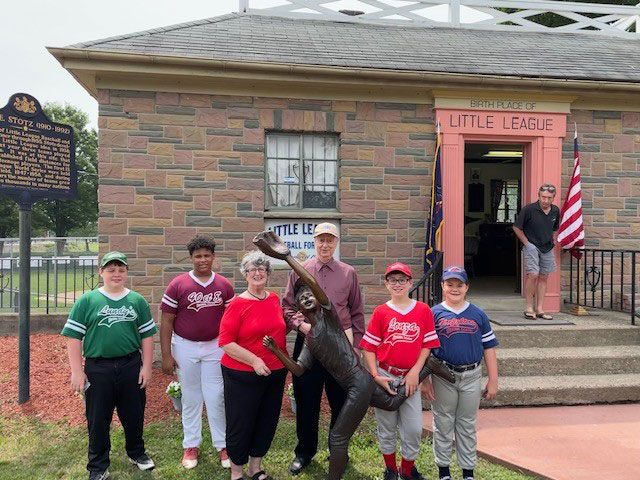
By Silvio Laccetti
TOMS RIVER – It is Little League World Series time again. Teams representing each of the eight US regions participated in the event held in South Williamsport, Pa. From a three team league in 1939, Little League has grown worldwide to involve almost three million youth in its various types and levels of play. New Jersey is a hotbed of interest and activity in LL. Collectively, our teams have made 19 appearances at the World Series, winning championships in 1949 (Hammonton), 1970 (Wayne), 1975 (Lakewood), and 1998 (Toms River, East).
So, how did this noble youth activity get started? Who invented Little League?
It’s a question very few people can answer. Even sports aficionados might not know. Carl Stotz founded Little League in 1938 at Williamsport, PA, and the first games were played the year after. He came up with the concept when trying to provide meaningful, exciting sports activity for his two young nephews’ level of play. After more than eight decades, how many millions of children and parents have been greatly impacted by this organization?
Problem is Carl Stotz, the inventor of the game, is not commonly referred to in broadcasts and promotions. But he is an important person in America’s social history. Pulitzer Prize winner Gary Wills, in his book on leadership called “Certain Trumpets,” chose Stotz as one of 15 types of historical leaders. He’s in there with Lincoln, Tubman, Napoleon and Mary Baker Eddy (another relatively unknown person, founder of Christian Science).
In teaching about leadership when I was at Stevens Tech, in Hoboken, I used the Wills book and came to know about Carl Stotz. In retirement, I made it a point to go to the Williamsport Little League complexes to see how Stotz was presented.
I concluded he was under-presented! Part of this story involves Stotz’s resignation from the Presidency of Little League in 1955 over issues regarding commercialism. But everything he did from the start is still with us in the various rules and regulations and, especially, the spirit of volunteerism.
Through my namesake foundation, I decided to do something to increase public awareness about the man. Hence the donation of a statue, “The Centerfielder,” to the Original Little League and the public.
At the recent dedication ceremony at Original Field in Williamsport, Karen Stotz-Meyer, Carl Stotz’s daughter, and I highlighted the special contributions of Stotz to American society:
- No other sports program has directly affected so many lives on so many levels as Little League
- The teams and the LL organization build character through cooperation and teamwork
- Volunteerism is a key component of the entire operation. Individual contributors are memorialized in ways not normally found in large organizations. Recognizing this, Little League International’s first large World Series venue is named Volunteers Stadium
- Stotz’s rules democratized sports. Every kid HAD to play in every game
- Little League became the symbol of the great years of the 1950s in America
- Today, Little League is one of America’s great exports.
Through his hard work, dedication and persistence, Carl Stotz created Little League. He made his vision, embodying the fantasies of so many kids, a reality. He deserves his place as a great leader.
So, now you know who invented Little League. Enjoy the games!
Silvio Laccetti, Ph.D. is a retired professor of history at Stevens Institute of Technology, Hoboken. He has been a national columnist for the past 20 years.






